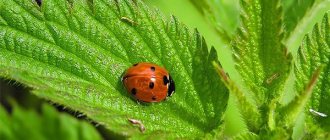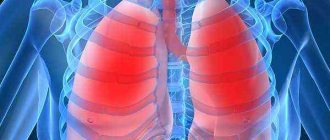With the onset of spring and autumn, allergic reactions appear much more often, and parents do not always notice in time that it is allergies in children under one year old, since its main symptoms are similar to the common cold. To quickly and effectively cure a baby, you must correctly identify the irritant, and only then take appropriate treatment measures.
If your baby has redness or a rash on his skin, you need to urgently find out what caused the allergy.
What causes allergies in a child?
There is a list of typical allergens. These include substances, interaction with which causes allergies many times more often than other components. To find out what the child is allergic to, the doctor conducts a survey of parents to find out whether there are typical allergens in the child’s diet or environment.
Typical allergens:
- Food components. It is the wrong diet that is the main cause of allergies in a baby. And so, the following products are considered typical food allergens: egg yolks, honey and other bee products, chocolate, baked goods, whole cow's milk, cereals containing gluten (oats, wheat, barley), flour, carrots, citrus fruits, tomatoes, various nuts.
- Plant pollen, which is difficult to protect against because it is microscopic in size and is carried by the wind over vast distances;
- Animal fur, as well as bird plumage. In some cases, there may be an allergy to the fur of any animal;
- Medicines (especially antibiotics and anti-inflammatory drugs);
- Household chemicals that surround children everywhere. The children's body is extremely sensitive to various synthetic components.
Causes of the occurrence and development of the disease
The formation of the immune system begins immediately after the birth of the child and the baby receives protective substances from the mother's milk.

That is why much attention is paid to breastfeeding, but even its presence will not be able to save children from probable factors that provoke the development of allergies:
- poor diet and poor hygiene;
- early refusal of natural breastfeeding;
- insufficient or weak development of the immune system;
- genetic predisposition passed on by parents.
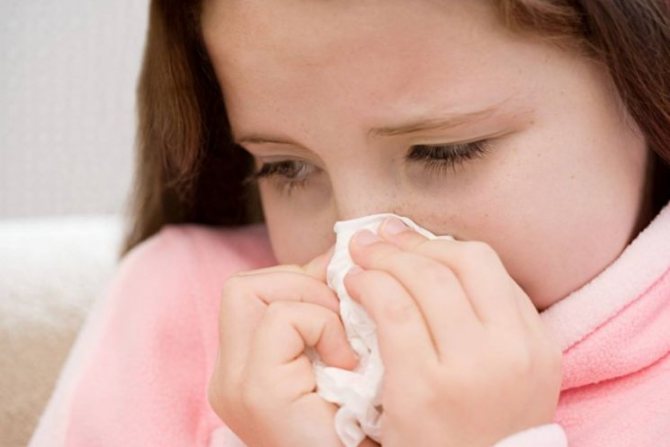
The development of an allergic reaction is provoked by a variety of active substances that the immune system is unable to recognize.
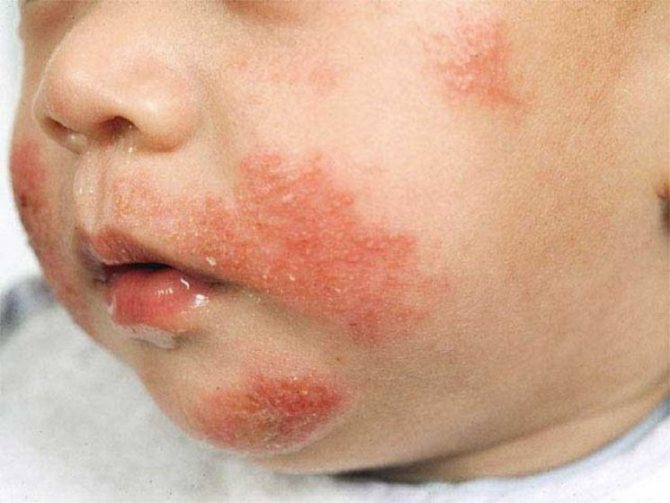
Medical and folk treatment of allergies in a child is aimed at eliminating the external manifestations of the disease, but it is important to pay attention to strengthening the baby’s immunity.
Allergy symptoms in children
You can find out what your child is allergic to by observing its symptoms, which are very specific. However, allergy symptoms are a very heterogeneous phenomenon. Therefore, in different children, the same type of allergy may have different symptomatic manifestations.
- Skin rashes.
This symptom most often occurs as part of a food allergy. The skin rash can be either in the form of flaky areas or in the form of small nodules filled with a specific liquid. Skin rashes are often accompanied by severe itching in places where they are localized;
- Allergic dry cough and acute attacks of sneezing.
These manifestations are associated with the body’s attempt to get rid of the allergen that has entered;
- Symptoms of rhinitis.
They cause inflammatory processes localized within the mucous membrane. They make breathing significantly more difficult, and along with them comes an intense runny nose;
- Swelling of the skin tissue and mucous membrane.
During an allergic reaction, local blood vessels located in the area of the allergic reaction release fluid in large quantities, penetrating into the tissue cavity. This causes the skin and mucous membranes to swell. Swelling of the larynx is the most dangerous symptom, as it can cause suffocation.
- Digestive tract disorders.
The big problem that makes it difficult to find out what a child is allergic to is that the symptoms of allergy and dysbacteriosis are in some cases indistinguishable. In view of this, differential diagnosis should be carried out between these diseases.
Are food allergies life-threatening?
Dangerous manifestations of food allergies include coughing and shortness of breath. These symptoms eloquently hint that you will soon have to deal with bronchial asthma - a life-threatening condition. A small amount of an allergen food is enough to cause asthma attacks, and without an antihistamine a person may simply suffocate. Swelling of the throat and mouth due to food allergies can cause respiratory and circulatory arrest, hypercapnic coma and sudden death. Death after angioedema occurs in 30 percent of cases, which is a lot according to medical statistics. But even in these cases, before emergency help arrives, you can save the child by giving him the antihistamine Nalkrom. buy it with delivery in Moscow by ordering through intermediary portals on the Internet. In the case of anaphylactic shock, the time for help goes by minutes.
How to find out what your child is allergic to?
An allergy in a child may not appear immediately after interaction with an allergen, but after a certain period of time. Sometimes, especially in the case of food allergies, it can take a week or more for the first symptoms to appear. Dietary measures, in this case, can help you find out the nature of the food allergen. To begin with, you need to pay close attention to whether your baby’s diet contains foods that have significant allergenic potential. These include: all types of nuts, bee products, cocoa and chocolate, seafood, wheat flour products, wheat, oatmeal, barley, tomatoes, carrots, beets, bell peppers, eggs.
Each of these foods should be eliminated for two weeks. If you see that your child’s allergy symptoms are gradually disappearing (they begin to decrease after no contact with the allergen), then the cause is some highly allergenic product. Gradually, once every three days, give your child one of these products, along with hypoallergenic ones. Carefully monitor the child's behavior, skin reaction and other factors that will help you determine the dependence of the onset of allergies on certain foods.
It is also necessary to take into account that, depending on the natural conditions in which the child lives, excluding such a significant number of suspicious products may not be practical. Indeed, in addition to the risk of developing allergies, they are also primarily products with high biological value. Therefore, if the doctor finds it difficult to choose a replacement that is worthy of nutritional value, then it is necessary to remove foods from the baby’s diet one by one.
Allergen-specific immunotherapy is the only way to get rid of allergies
Allergen-specific immunotherapy (ASIT) was first developed more than a hundred years ago. To date, this treatment remains the only one that affects the cause of the allergy.
It should be noted that the mechanism of action of ASIT on the human immune system is not fully understood. However, the technique works.
The essence of specific immunotherapy is that the patient is gradually, starting with microdoses, “accustomed” to the allergen. To do this, the components are administered directly into the body (subcutaneously or orally), increasing the dose from time to time. The result is the “weaning” of the immune system to respond to “false” agents.
Allergen-specific immunotherapy is the only treatment that, although not entirely clear, targets the cause of the disease. The question arises: “If there is an effective way to cure allergies forever, then why is it not used everywhere?”

Mechanism of development of allergic reactions
ASIT is a multicomponent therapy performed by an allergist-immunologist. The duration of treatment to create a stable remission is from 3 to 5 years. In this case, the patient should:
- stick to a certain diet all the time;
- monitor your condition;
- live under medical supervision.
Article on the topic: How to take a blood test for immunoglobulin E in [y] year
In Russia, where allergies are traditionally not considered a serious disease, only patients with a severe form agree to undergo such treatment, when it literally kills.
Note! An important factor is the high cost of ASIT, since this treatment is not included in the list of compulsory medical insurance services. A full three-year course will cost from 100 to 150 thousand rubles.
Approximate prices (depending on region):
- consultation with a specialist – 1000-1800 rubles.
- diagnostics – 1 test for 1 allergen 400-450 rub.
- treatment course – from 15,000 rubles.
- maintenance therapy – from 8500 rub.
Experts joke that treatment of seasonal pollen allergies using the ASIT method is comparable in cost to the opportunity to leave and wait out the flowering season in a different climate zone.
Drug allergy
Tests for allergies in a child
To find out what exactly the baby is allergic to, special laboratory and diagnostic measures are used. They make it possible to determine with a high degree of accuracy not only the nature of the allergen, but also to obtain information regarding the characteristics of the course of the disease in the child and the mechanisms of the immune response. The use of special diagnostic procedures can shed light on numerous aspects of allergic disease. But it is worth remembering that diagnosing allergies in children has its own specifics. Thus, some methods used to diagnose allergies in adults are strictly contraindicated for children.
The most commonly used diagnostic procedures are skin tests and blood tests. Also, in some cases, diagnostics of biological material formed during allergic reactions (ichor, tissue biopsy, secretion secreted from the eyes and nose) can be carried out. Although this is performed less frequently than standard diagnostic procedures, in some cases the use of these methods is justified.
Description of the drug Nalcrom
You can even buy the Italian antihistamine Nalkrom in Moscow on the Internet. The dosage form in the form of capsules is convenient for internal use by both children and adults. The main active ingredient of this medication is cromoglycic acid. It helps reduce the activity of mediators - biologically active substances responsible for the occurrence of allergies. A course of use of the drug significantly reduces the permeability of the intestinal walls to antigens that cause allergic reactions. For treatment and prevention, Nalcrom is prescribed in case of diagnosis:
- Any form of food allergy;
- Gastrointestinal diseases;
- Ulcerative colitis;
- Inflammation of the intestinal mucosa;
- Mastocytosis.
Skin tests in children
Skin testing is a diagnostic method that allows you to determine whether a child’s body is sensitive to a specific allergen. Let’s immediately make a reservation that this method is, first of all, an allergen directly introduced into the body. For this reason, it is not used to diagnose allergies in a child under 3 years of age. This is due to the extremely high sensitization of the immune system in childhood and the risk of side effects is much higher than the benefits of these measures.
Why are skin tests performed?
- organization of specialized nutrition for children who suffer from food allergies;
- find out the type of pollen, the ingress of which provokes an allergic reaction;
- establish the allergic nature of rhinitis or the absence thereof;
- find out whether the symptoms of bronchial asthma have an allergic background;
- establish a dividing diagnosis with other diseases.
Skin testing technique in children
Skin tests are mandatory in special diagnostic centers or in hospital settings. To carry them out, not whole allergens are used, but solutions of their components, which, when absorbed by the body, become the cause of allergies. This diagnostic method shows greater inaccuracy in food allergies, so they try not to use it in this case.
Skin tests in children have a high degree of accuracy when determining the cause of allergic reactions in allergies to pollen, house dust, insect bites, animal dander, etc. Allergens can be administered by injection, application of a special bandage and injection through small incisions. In each specific case, the direct method of implementing these diagnostic methods is chosen by the doctor. The sensitivity of the immune system and how severe the disease is is of enormous importance.
A week before the procedure, the use of drugs containing antihistamines and corticosteroids is discontinued. In this case, we are interested in the immediate symptoms of allergies, which are eliminated with the help of these drugs. This leads to the fact that test readings during their use may be negative, while there is a high sensitivity to these substances. For this reason, the skin diagnostic method is not used in cases where the allergy is in the acute stage. Often, in this case, the course of treatment cannot be interrupted.
Allergy – what is it?
An allergy is an increased sensitivity of the body to ordinary “things” to which healthy people are neutral. The immune system reacts to allergens in the body, damaging its own tissues.
Classic manifestations of allergies: inflammation of the mucous membranes of the respiratory tract, bronchospasm, dermatological manifestations or digestive disorders. The most dangerous reaction is anaphylactic shock.
Allergens in the body are divided into:
- infectious - viruses, bacteria, fungi, helminths;
- non-infectious - dust, plant pollen, animal hair, food, medicines, sun, cold, odors.

It is customary to distinguish the following types of allergies according to their manifestation:
- catarrhal allergy - a reaction to an irritant, which is expressed in symptoms of a cold, runny nose, bronchitis, asthma;
- drug allergies – to medications (penicillin antibiotics, aspirin, sulfonamides, anesthetics, etc.);
- food allergy - a child can even experience it to mother’s milk;
- contact allergy – to chemicals, fabrics, rubber, animal saliva;
- insect allergy – to insects, their bites, their metabolic products;
- infectious allergy – when manifestations of an inflammatory reaction occur as a response to one’s own bacteria;
Separately, we can distinguish the atopic form of allergy (neurodermatitis), when a person reacts to his own experiences with physical manifestations of the disease. It is almost impossible to get rid of this form of the disease.
Note! Allergy is a disease that progresses without adequate treatment. Rhinitis is replaced by asthma, and dermatitis turns into eczema. The spectrum of sensitization is expanding, new allergens are being added.
To recover from hypersensitivity, people spare no effort and money. However, things rarely progress beyond symptomatic care for exacerbations and attacks. Is it possible to completely recover from this disease?
Article on the topic: Milk allergy in adults and children: symptoms, diagnosis and treatment
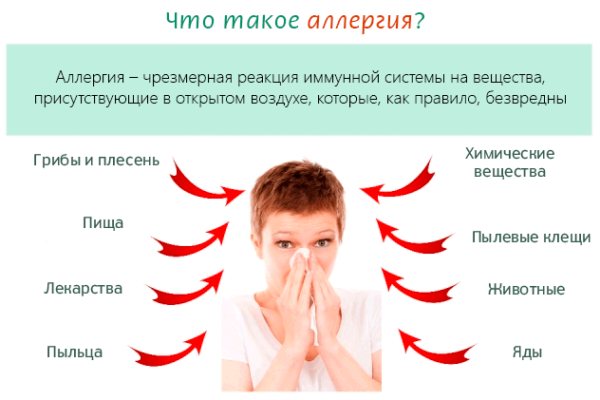
Blood test for antibodies in children
A blood test for antibodies is carried out to find out the cause of the disease, as well as to make a differential diagnosis with other diseases. Antibodies are specialized protein structures that trigger a cascade of allergic reactions after an allergen enters the body. To do this, you just need to take blood from a small child. In the future, work is carried out with this material in laboratory conditions. At the same time, the child himself is not exposed to allergens.
With this method of analysis, an allergic reaction is diagnosed by an increased level of special antibodies: IgE and IgM, which begin to be intensively produced after contact with the allergen has been recorded.
Symptoms and treatment of household allergies
Household allergies appear not only in babies under 1 year of age; they can occur in people of any age. The main causative agent of irritation is house dust, which contains a lot of complex components, starting with pollen from house plants and ending with microscopic living organisms, for example, bed mites.
Symptoms of household allergies are:
- tearing of the eyes, which may be accompanied by burning;
- frequent sneezing and runny nose;
- dry throat and occasional cough.
Coping with this type of allergy is not easy; this will require taking comprehensive measures in terms of room hygiene.
- First of all, you should minimize sources of dust accumulation - knock out and clean carpets and rugs (if possible, remove them altogether), where possible, replace heavy curtains with light curtains or washable blinds, and promptly clean fabric interior items.
- Secondly, caring for pets will be an important point. To prevent the spread of animal hair throughout the rooms, it is necessary to periodically comb out the fur with special combs, bathe the animals with shampoo, and also monitor their sufficient and complete nutrition, since the degree of shedding depends on the quality of the products consumed.
- Thirdly, houseplant care is required to minimize pollen counts and eliminate harmful insects.
- Fourthly, regularly changing bed linen and cleaning feather or washing synthetic mattresses and pillows will help get rid of allergy triggers - mites. In addition to regularly cleaning bedding, your child’s room should be wet cleaned at least 2-3 times a week to humidify the air and fill the room with freshness.
- Soft toys for children under 1 year also deserve special attention - they need to be washed 2-3 times a month to prevent the accumulation of dust and the generation of static voltage.
Useful: How to take blood from a vein from a small child
In homes with good hygiene, household allergies rarely occur, so maintaining indoor hygiene will help prevent unpleasant allergic reactions.
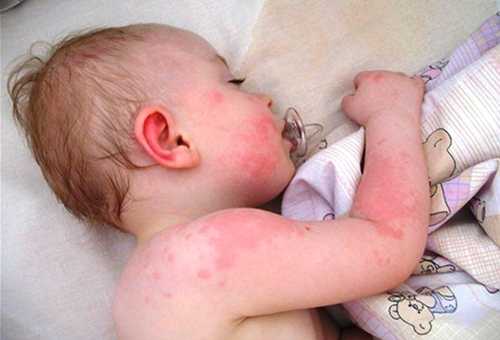
Irritation may occur on baby's delicate skin when in contact with diapers, nappies or unsuitable clothing.
How to recognize different types of allergies in a child?
Food allergies in a child
Food allergies are very common in children. Symptoms of this disease can appear on almost any food product. Very often newborns are susceptible to this disease.
Even if the baby is breastfeeding, he can still receive certain allergens from the milk that the mother ate. To prevent this, the mother should use only those products whose allergenic activity is minimal. This method is called the “hypoallergenic diet”. The doctor will definitely familiarize the mother with it before starting feeding.
Some children develop allergies due to another reason - lack of breastfeeding. The disease in this case is caused by the fact that the components of artificial mixtures can also be allergens and this occurs much more often than we would like. In addition, the very absence of breast milk can become a trigger for the development of allergic reactions. Therefore, the best option in this case is the mother’s strict adherence to a specialized diet during feeding.
You can recognize a food allergy in a child by the appearance of a skin rash. Inflamed red lesions form on the skin, and a rash appears consisting of small, frequent nodules. All this is accompanied by very severe itching. Most often, rashes due to food allergies in a child are localized on the face, elbows, knees and buttocks. Also, during a food allergy, the child suffers from stomach colic, intense bloating, frequent regurgitation, and stool disturbances.
Allergy to animal fur
In this case, it is necessary to immediately indicate that the wool itself is not allergenic to humans. In this case, natural proteins contained in the secretions and skin of the animal that fall on the surface of the fur form an allergic reaction. It is important to say this, because often many parents think that it is enough to have hairless breeds of cats or dogs for the allergy to go away.
Remember that even hairless breeds of animals, if the child is allergic, will still cause allergies. Therefore, the optimal solution is not to have animals to which the child is allergic at all.
Finding out that an allergic reaction in a child occurs precisely upon contact with cat fur is not so difficult. After contact with animal fur, the child begins to sneeze intensely and frequently, immediately having attacks of a runny nose, and tears flow from the eyes. Symptoms of bronchial asthma may develop. If your baby's skin is highly sensitive, pet fur can cause skin irritation. But here we are talking less about allergies, and more about the fact that the tendency of the skin to irritate in this case does not have an allergic background.
Allergy to dust in a child
Dust allergies are quite common among children. It should not be treated with connivance, because in the future an allergic reaction to dust can turn into bronchial asthma.
It is very easy to find out that dust is the source of an allergen for a child. The child begins to sneeze, cough, runny nose, and watery eyes. All this happens almost immediately after contact with dust. It is worth noting that dust itself is not an allergy, but it contains various microorganisms that can cause allergies. The fact that an allergic reaction can occur to house dust, while street dust is tolerated normally, is due to the difference in its composition. Since the presence of dust in certain places can lead to the accumulation of certain types of microorganisms on its surface.
Children's milk allergy
At the age of up to 2 years, products based on whole milk are the most common triggers of childhood allergies. In this case, the symptoms of the disease become noticeable after a protein specific to cow's milk enters the baby's body. The child's body, being in a state of acute sensitivity, can mistake these protein structures for a foreign object. Milk allergies are directly related to breastfeeding. Children who are deprived of mother's milk or switched to artificial feeding subsequently most often suffer from hypersensitivity to cow's milk.
How can you find out that an allergy is caused specifically by those products that are prepared on the basis of whole milk? After eating a diet containing dairy products, a child develops a rash on the skin, which leads to disruption of the gastrointestinal tract. Characteristic: diarrhea, bloating, frequent belching of air. The unpleasant symptoms that appear with a milk allergy make the child whiny, irritable, and disrupt sleep.
Children's gluten allergy
Gluten often causes allergies in people of all genders and ages. This type of food intolerance is one of the most common. Gluten is a structural protein found in grains such as rye, wheat, barley and oats. Children have great difficulty digesting this type of protein, which causes various allergic reactions.
When breastfeeding, there cannot be an allergy to gluten, since it is exclusively a plant protein. The first signs of this disorder in a child appear when natural products are added to the diet. Gluten allergy can be recognized by the following signs:
- skin rashes appear;
- the child begins to have frequent diarrhea;
- pain in the gastrointestinal tract;
- frequent belching of air;
- the child asks to eat less and less;
- frequent crying and insomnia;
- weakness and irritability.
An allergy to gluten is a very dangerous phenomenon for a child; if you do not find out its nature and continue to give gluten-containing products, the child may weaken significantly, even to the point of exhaustion. They can cause deterioration in the functioning of the gastrointestinal tract, which leads to impaired food digestibility. A lack of nutritional intake at this age poses a potential danger for the further development of the child.
If a child is allergic to gluten, the following must be excluded:
- all products made from oats, rye, barley, wheat;
- bakery products and pasta products;
- baked goods and sweets (factory-made cakes, pastries, cookies, etc.);
- factory-made yoghurts;
- sausage products and other semi-finished products.
Please note that gluten can be used to give a thick consistency to products that are not directly related to cereals. Therefore, carefully study the composition of products for the presence of gluten.
Allergy to cold in a child
Cold climatic conditions naturally affect the skin of a healthy person, making it rougher and rougher. Now imagine how sensitive your baby’s skin is. Allergy symptoms develop after a long walk with the baby in cold weather.
Finding out the nature of an allergy to cold is very simple. Its symptoms appear after the child has been outside in low temperatures. They include the appearance of a variety of rashes, most often cold urticaria (rashes of light pink or bright red colors, varying in frequency and size). With this phenomenon, the provocateur of an allergic reaction is not the cold itself, but those biological substances that the body produces at low temperatures. As the child grows older, he simply outgrows this phenomenon.
Effective ways to get rid of allergies
Classic methods of treating allergies vary depending on the type of disease. Treatment includes drug symptomatic therapy, anti-inflammatory treatment (local or systemic), dietary restrictions, isolation from the irritating agent. In each case, the treatment will be different.
How to get rid of animal allergies?
Getting rid of a painful reaction to animal hair, saliva and sweat is quite simple - they need to be isolated from the patient.
If it is impossible or unwilling to do this, certain rules should be followed to minimize the patient’s contact with the animal. In the case of dogs, this is somewhat easier, since allergies to dogs are often a reaction to saliva and sweat secretions.
If you are allergic to dogs, the following activities will help get rid of symptoms (or reduce them):
- the animal is not allowed on the bed, sofas, armchairs, chairs;
- the patient should avoid touching the pet with his hands; if this happens, then immediately, without touching his face, he should wash his hands with soap;
- The house must be cleaned daily;
- You should get rid of the carpet on the floor so that hair and animal drool do not collect on it;
- It is important to keep your pet clean, cut and combed.
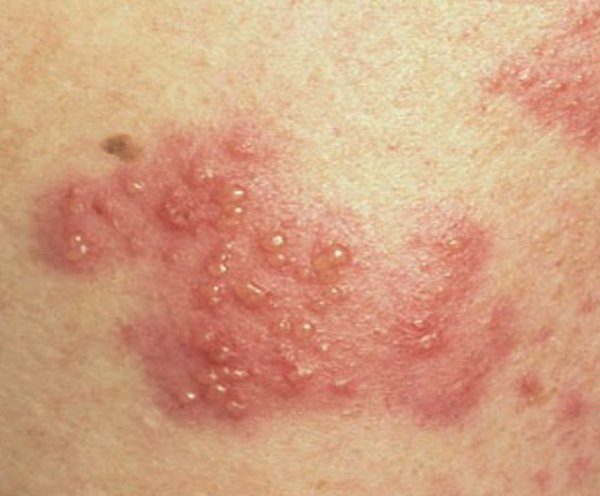
With allergies to cats, the situation is usually worse. The very presence of a cat in the house can cause attacks of suffocation, rhinitis and lacrimation, even if the animal is not allowed into the patient’s room.
Article on the topic: What does a skin allergy look like: photos and types of manifestations
Cat hair is a strong allergen, but unlike a dog, a cat cannot be trained to live only on the floor. Thorough cleaning of the home does not relieve symptoms because cat hair remains in the air.
There are 3 ways to get rid of animal allergies:
- part with the animal;
- leave the pet, but follow certain rules and take antihistamines;
- be treated using the ASIT method.
Note! An effective long-acting remedy Diprospan. One injection of the drug will relieve symptoms of the disease for 2-4 weeks.
There are many positive reviews about this medicine. “I was cured with the help of Diprospan, and now I don’t need to give up my pet,” such reviews can be found on the Internet or heard in line with an allergist. However, it is worth understanding that if someone was cured with Diprospan, this does not mean that the drug is suitable for everyone.
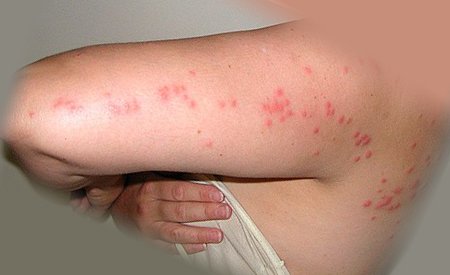
Allergy to cat saliva
How to get rid of seasonal allergies?
Treatment for seasonal fever should begin several months before the flowering season. During an exacerbation of the disease, allergen-specific immunotherapy is not performed.
Here it is only possible to get rid of the symptoms with systemic antihistamines, nasal medications, and anti-inflammatory drugs.
Note! Sensitivity to pollen is a direct indication for ASIT. This is the only way to cure allergies forever.
Seasonal allergy to poplar fluff
How to get rid of food allergies?
In case of food sensitization in children, it is necessary to identify the agent and exclude it from the diet. The best prevention is breastfeeding, late and careful complementary feeding, and compliance with dietary restrictions in food from the mother, starting from pregnancy.
You should get rid of chocolate, citrus fruits, coffee, red berries and fruits.
Allergy treatment begins with a diagnosis, identification of the allergen and transfer of the baby to a hypoallergenic diet. In the future, as the child grows, under the supervision of a doctor, the dietary table is expanded, including the prohibited product in minimal doses.
With proper treatment, symptoms disappear by 3 years. Without treatment, food allergies can transform into asthma and severe dermatitis.
You can get rid of reactions to certain foods in an adult with the help of ASIT.

How to get rid of body allergies
Symptomatic therapy
Symptomatic therapy remains the most popular method of treatment and self-medication today. If your doctor prescribed medications, take them strictly as prescribed.
If you feel that the drug is not suitable for you, then the selection of another systemic medication should be carried out by a specialist.
What you should not do on your own:
- use hormonal drugs without a doctor’s prescription or for longer than 5 days;
- use any medications in children without a doctor’s prescription;
- use hormonal ointments on the face (the best remedy for the face is cream or gel);
- cancel or prescribe potent drugs or injections;
- take medications without a doctor's prescription during pregnancy or breastfeeding.
It is impossible to understand the variety of medications on your own. To get rid of allergies forever, make an appointment with an allergist and start professional treatment.
